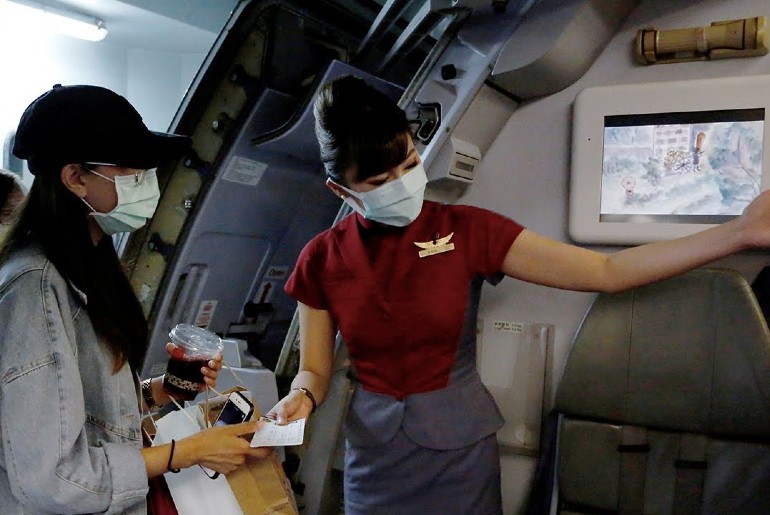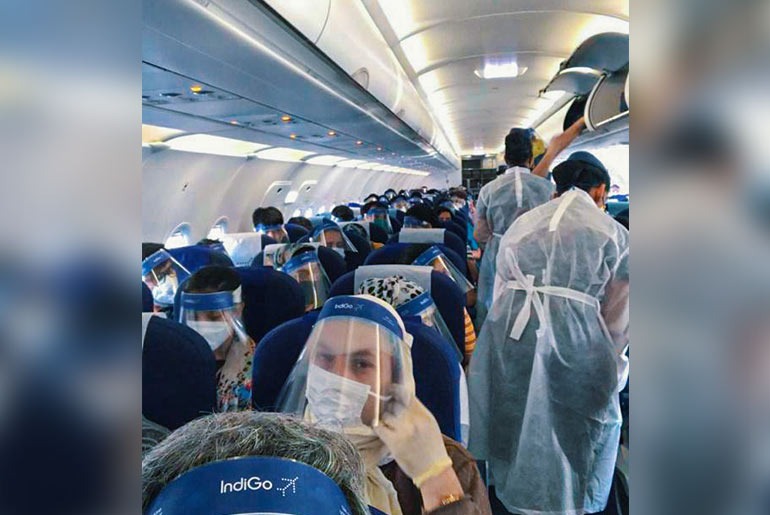When a pandemic strikes, it is natural to become sceptical of hopping on an aeroplane. While all airports have begun screening passengers for the coronavirus, sanitising their seats and providing PPE kits, those measures may not offer much solace to you if you have to board a flight. After all, you can avoid the person sneezing in the queue while boarding, but you’re left to fate once you have strapped on that seat belt inside a flying metal chamber. So how do those viruses explicitly spread on an aeroplane? And which is the safest place to sit on a plane? Let’s take a look.
Also read: Emirates Passengers From Dubai Can Now Get Covid-19 Test For AED 150

Transmission Of Virus Inside The Plane
When an infected person sneezes or coughs, they shed droplets of mucus, saliva or other bodily fluids. If those droplets fall on if you come in touch with the droplets and then touch your face, you can become infected. According to experts, being within six feet of an infected person for 10 minutes or longer can infect you. Flying Vs Driving During COVID-19: Which Is Safer?
Coronavirus Can Spread Within Two Rows Of An Infected Person
The WHO defines contact with an infected person on a plane as being seated within two rows of one another. But most people do not just sit during flights, particularly the ones that are long. They stretch their legs, grab items from the overhead bins and visit the lavatory. In fact, during the 2003 coronavirus outbreak of SARS, a passenger onboard a flight from Hong Kong to Beijing infected many people well outside the WHO’s two-row boundary. However, the virus will most likely be transmitted to passengers within one row of an infected person.
Respiratory illnesses can also spread through the surfaces upon which the droplets land like the tray tables and the airline’s seat. How long those droplets last depends on the surface. Viruses can vary dramatically in how long they last on surfaces, and it can range from hours to months. Singapore Airlines To Launch ‘Flights To Nowhere’ For Those Craving For A Vacation.

The Safest Place To Sit On A Plane
Choosing a window seat and staying put at a place can lower your likelihood of coming into contact with any infectious disease. Suppose you’re seated in middle or an aisle seat, and your co-passenger walks by to go to the lavatory, you are going to be in close contact with them. So, if they are infected, they could well transmit it to you. If you’re seated in an aisle seat, there will undoubtedly be quite a few people moving past you, but they would move quickly. So in theory, there’s quite a low probability of transmission to any particular passenger even in the aisle seat because you can always get up to give space to anyone moving out of middle or window seat. Here are 9 Simple In-Flight Routine Steps Every Time You Air Travel During The Pandemic.
The story changes if the infected person is a crew member. Flight attendants spend a lot of time walking down the aisle and interacting with passengers. Besides, they are more likely to have longer and closer encounters. According to a study, a sick crew member has the probability of infecting 4.6 passengers. Don’t get anxious; the health of the crew is regularly monitored.
First Published: September 16, 2020 1:46 PM






